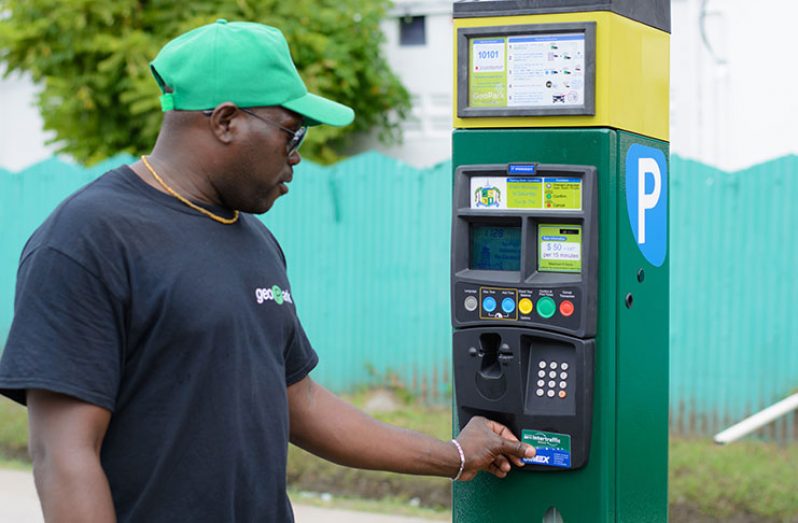THE increased number of vehicular traffic within the nation’s capital has long been a concern for the local authorities.
However, the implementation of parking meters is inadequate to address the myriad of issues contributing to traffic woes in Georgetown, Minister of Public Infrastructure, David Patterson, has highlighted.
The minister was at the time addressing the contentious parking meter issue, when he indicated that a preliminary study on sustainable transportation for Georgetown had revealed that much more has to be done to address what seems to be a continuous traffic management issue within a growing city.
Minister Patterson said that based on the preliminary findings of the Sustainable Transport Sector Plan (STSP) 2016-2026, Central and Local Government may very well need to consider the implementation of parking meters, the restriction of certain vehicles, and serious infrastructural rehabilitation among other measures.
BURSTING AT THE SEAMS
One of the preliminary findings also is that “Urban roads in Georgetown are bursting at the seams.” The minister estimates that in the last 15 years, some 8000 cars have been added to the roadway without the complimentary infrastructure being put in place to support the increased flow of traffic.
The roads in Georgetown are not wide, the Minister observed, before highlighting the traffic congestion that this issue causes during peak hours on work days.
“The traffic study may lead to us having to restrict container cargo on certain days; to us making some roads “one-way” because of the commercial activities,” Minister Patterson said, adding:
“We have to have some sort of regulation. So, yes, parking meters may be one of the menus, which the study recommends.”
Still on the subject of parking meters, the minister said: “I don’t want anyone to go away with the impression that I am against parking meters, or that the ministry won’t be recommending parking meters; we would.”
But in the meantime, he said, in order to avoid chaos, the parking meter has been suspended so as to allow for “impartial” discussions over the issue.
He said, too, that the city must be looked at in its entirety, since there are several other issues that need to be taken into account when addressing traffic issues in the city. One of the issues at reference, he said, is the occupation of the city’s reserves because of excessive parking.
For that matter, almost all the city’s reserve space are being used for either parking or commercial activity.
TAKING BACK THE CITY
“We have to start taking back the city in concerns of drainage and everything like that,” the minister said. He noted, too, that all parties involved need to be mature and far-looking when addressing the issues of the city to ensure its preservation.
The Public Infrastructure Ministry commenced preparation for the Sustainable Transport Sector Plan (STSP) 2016-2026 late last year. They say that the plan is one of the key economic infrastructure to support the socio-economic development of Guyana and respective aspects of its transportation sector.
The planning approach, the ministry says, “…provides a coordinated and cohesive planning framework that enables a whole of Government perspective in the prioritisation and funding of investments in the transport sector; [and] is intended for a consistent policy and regulatory regime that ensures efficiency, safety and sustainability in the construction, maintenance and use of physical transport infrastructure and services.”
The consultancy aspect of the 2016-2026 plan is expected to be completed before mid-year.



.jpg)








